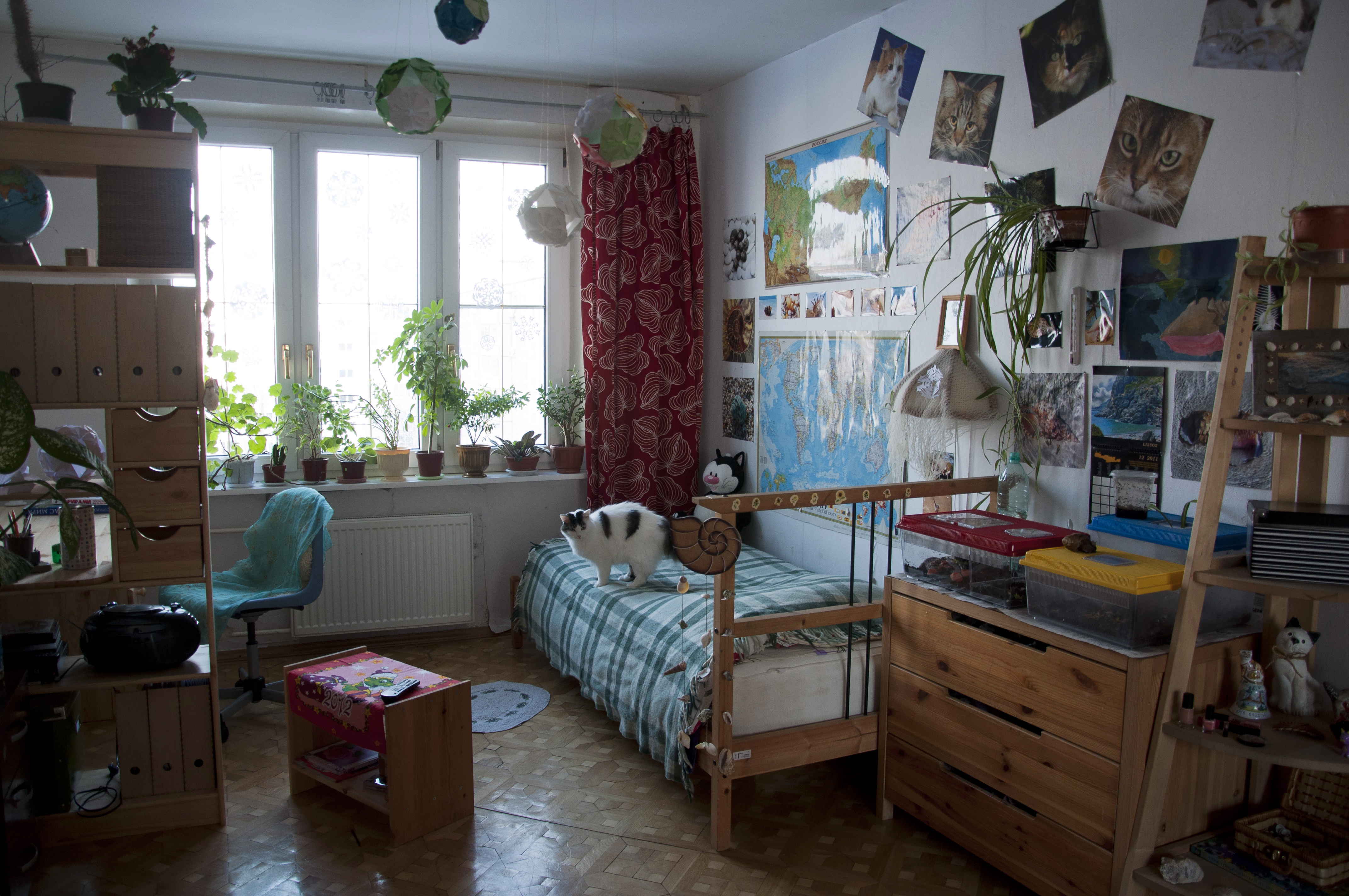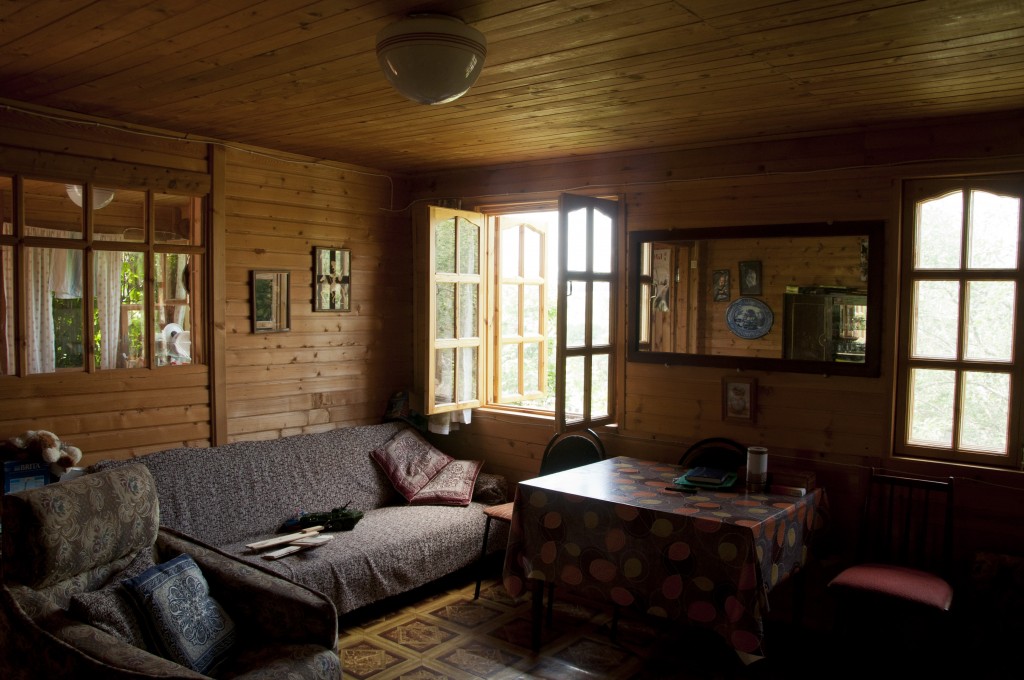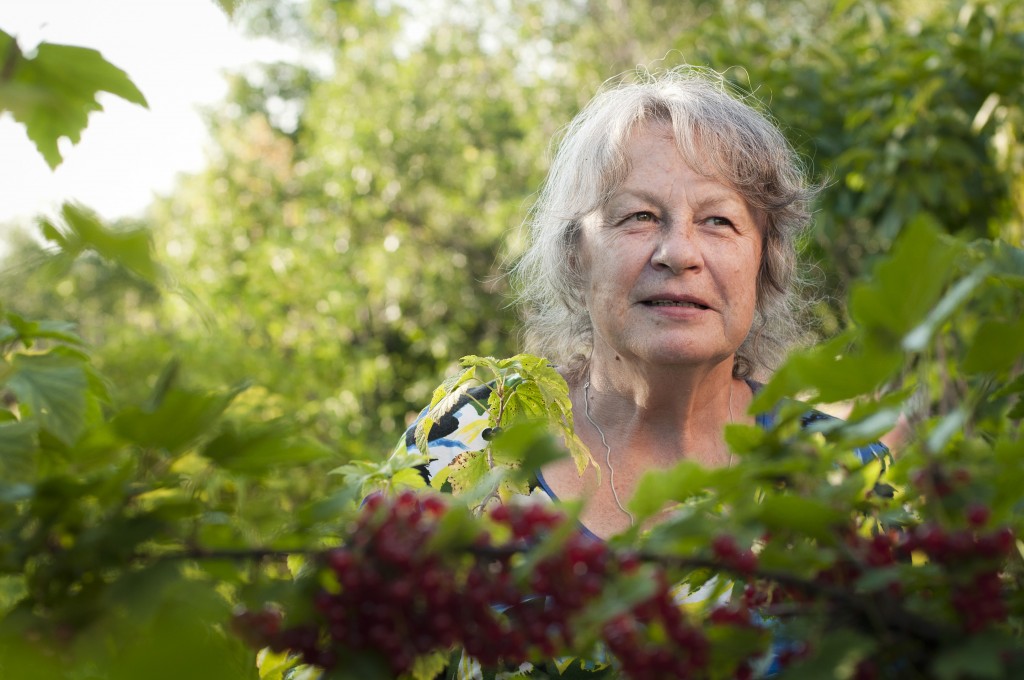The Dickinson College Russian Department has launched a new multimedia project, Russian Rooms, which combines photography, text, and audio in an evolving archive with diverse pedagogical applications. The project’s primary aim is to provide a snapshot of contemporary Russian society by building up a series of photographs of Russians and their favorite rooms.
 According to contemporary Russian philosopher Michael Epstein, the boundaries of private and public space are drawn differently in Russian and in the West: in Russia, private and public are demarcated far more sharply, and private space is warmer and more intense than in the West. This project seeks to test this premise. The site’s creator and curator is Maria Rubin, Visiting International Scholar in Russian. Prof. Rubin takes an intimate, close-up portrait of each subject standing next to or holding an object he or she values. She also takes a picture of the subject’s empty room. The viewer is invited to guess what sort of person inhabits the space, a curiosity which can be satisfied by referring to the portrait, the audio interview, and a transcribed version of the interview.
According to contemporary Russian philosopher Michael Epstein, the boundaries of private and public space are drawn differently in Russian and in the West: in Russia, private and public are demarcated far more sharply, and private space is warmer and more intense than in the West. This project seeks to test this premise. The site’s creator and curator is Maria Rubin, Visiting International Scholar in Russian. Prof. Rubin takes an intimate, close-up portrait of each subject standing next to or holding an object he or she values. She also takes a picture of the subject’s empty room. The viewer is invited to guess what sort of person inhabits the space, a curiosity which can be satisfied by referring to the portrait, the audio interview, and a transcribed version of the interview.
With support from an Andrew W. Mellon Foundation Digital Humanities grant, Prof. Rubin will spend part of summer 2013 in Russia substantially expanding the archive.

In her teaching at Dickinson Prof. Rubin and her colleagues use these photo-audio pairs in various ways. The simplest is a “Guess Who?” game, in which students ask questions to find out who lives in this or that room. Another type of assignment includes listening to the interviews and making presentations about a specific person. Sometimes students are asked to read the texts and write descriptions of the people using grammatical constructions to be learned in a particular lesson. Alyssa DeBlasio, Assistant Professor of Russian, regularly uses Russian Rooms in her senior seminar on translation. There the students translate a simplified transcript of an interview into English, then practice simultaneous translation on the original audio.
Plans for the future include incorporating students into the project, particularly students studying abroad in Moscow, who can help conduct the interviews and write up the texts. When Prof. Rubin returns to Moscow she will remain in charge of overseeing the creation of the interviews and photographs, working from Dickinson’s program headquarters in Moscow, while Prof. DeBlasio will supervise the expansion and improvement of the site on the Dickinson side. The project will thus form an important bridge between Dickinson’s Russian programs in Carlisle and Moscow.
 Having already explored different ages and genders, Prof. Rubin plans to expand the subject range to include Russian citizens of different ethnic backgrounds, a move that should prove a challenge to notions of public and private space explored so far. Newer inhabitants of Russia, such as Kirghiz and Uzbek guest-workers in Moscow city and in the Moscow county region, and native Muscovite Tatars and Chechens, have quite different notions of personal space, partly inherited from the Islamic house design and architecture of their homelands, but also compelled by the necessity of their sometimes harsh living arrangements in Russia: basements of tower-blocks, in wooden shacks on building-sites, etc. The project, so expanded, will thus allow Russian students all over the world to appreciate the diversity of contemporary Russia’s population, as well as to come to philosophical conclusions about overlapping conceptions of private and public space in one living area. All the material created in this project will become a part of the permanent teaching open resources of the Dickinson Russian department, and anyone else who wishes to use it.
Having already explored different ages and genders, Prof. Rubin plans to expand the subject range to include Russian citizens of different ethnic backgrounds, a move that should prove a challenge to notions of public and private space explored so far. Newer inhabitants of Russia, such as Kirghiz and Uzbek guest-workers in Moscow city and in the Moscow county region, and native Muscovite Tatars and Chechens, have quite different notions of personal space, partly inherited from the Islamic house design and architecture of their homelands, but also compelled by the necessity of their sometimes harsh living arrangements in Russia: basements of tower-blocks, in wooden shacks on building-sites, etc. The project, so expanded, will thus allow Russian students all over the world to appreciate the diversity of contemporary Russia’s population, as well as to come to philosophical conclusions about overlapping conceptions of private and public space in one living area. All the material created in this project will become a part of the permanent teaching open resources of the Dickinson Russian department, and anyone else who wishes to use it.
